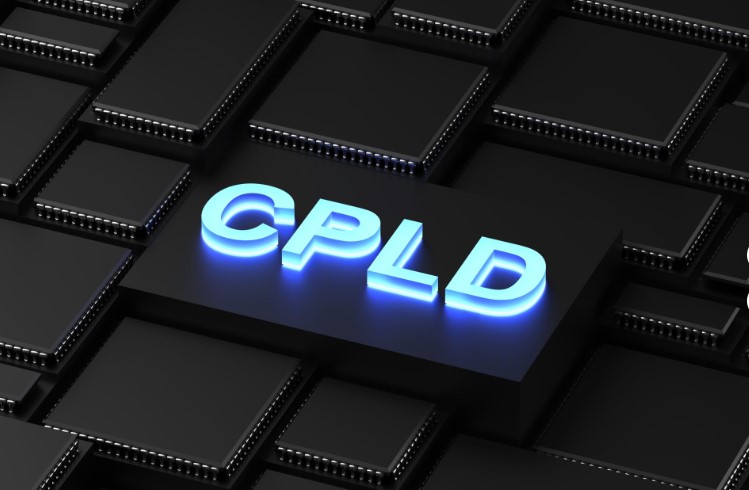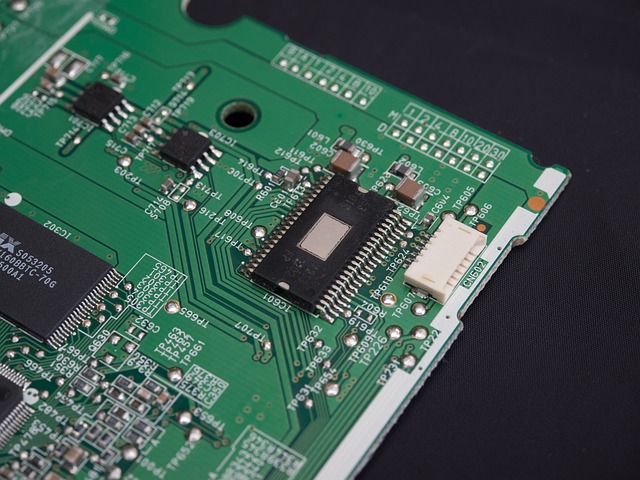Time: 2023-12-26 14:59:02View:

CPLD stands for Complex Programmable Logic Device. It is a type of programmable logic device that contains a large number of logic gates, flip-flops, and other digital circuits that can be interconnected and reconfigured to perform a wide variety of logic functions. CPLDs are used in a wide range of applications, including telecommunications, automotive electronics, industrial control systems, and consumer electronics.
One of the key features of CPLDs is their flexibility. Unlike traditional fixed-function logic devices, CPLDs can be programmed and reprogrammed to implement different logic functions, making them highly adaptable to changing design requirements. This flexibility makes CPLDs well-suited for prototyping and low- to mid-volume production runs, where the ability to make design changes without having to create new custom hardware can be a significant advantage.
CPLDs typically consist of an array of programmable logic blocks, input/output blocks, and a programmable interconnect structure. The programmable logic blocks contain logic gates and flip-flops that can be configured to implement specific logic functions, while the input/output blocks provide connections to the outside world, allowing the CPLD to interface with other digital and analog components. The programmable interconnect structure allows the various logic blocks and input/output blocks to be interconnected in a wide variety of configurations, giving designers a high degree of flexibility in implementing their designs.
In summary, CPLDs are a versatile type of programmable logic device that offer designers a high degree of flexibility and reconfigurability, making them well-suited for a wide range of digital design applications. Their ability to be reprogrammed makes them particularly useful for prototyping and low- to mid-volume production runs, where design changes may be frequent or where custom hardware development is not feasible.
CPLD stands for Complex Programmable Logic Device. It is a type of integrated circuit that contains an array of programmable logic blocks and a programmable interconnect, allowing it to be configured to perform a wide variety of logic functions. The "complex" in CPLD refers to the device's ability to implement relatively complex logic functions compared to simpler programmable logic devices.
CPLDs are used in digital logic design to implement custom logic functions, such as combinational and sequential circuits. They are particularly useful in applications where flexibility and reconfigurability are important, such as in prototyping, rapid development cycles, and low- to mid-volume production runs. Designers can use software tools to program the CPLD to perform specific logic operations, and the same device can be reprogrammed as needed, making it a versatile solution for a range of design challenges.
The architecture of a CPLD typically consists of an array of logic blocks, each containing a number of logic elements such as AND gates, OR gates, and flip-flops. These logic blocks can be interconnected through a programmable interconnect structure, allowing designers to create custom logic circuits by configuring the connections between the logic blocks. Additionally, CPLDs often include input/output blocks that provide connections to external circuitry, enabling the device to interface with other components in a larger system.
In summary, CPLDs are powerful and flexible integrated circuits that offer designers the ability to implement custom logic functions in a reconfigurable manner. Their versatility makes them well-suited for a wide range of applications, from rapid prototyping to low- to mid-volume production, and they continue to be an important tool in the digital design and development process.
CPLD (Complex Programmable Logic Device) and FPGA (Field-Programmable Gate Array) are both types of programmable logic devices used in digital circuit design. They offer flexibility and reconfigurability, allowing designers to implement various logic functions and complex digital systems. However, there are some differences between CPLDs and FPGAs in terms of architecture, capacity, performance, and usage.
Architecture:
CPLD: A CPLD consists of an array of programmable logic blocks interconnected by a programmable interconnect matrix. It typically contains a small number of logic gates, flip-flops, and macrocells. CPLDs are best suited for implementing relatively small and low-complexity logic functions.
FPGA: An FPGA is composed of a large number of configurable logic blocks (CLBs) interconnected by a programmable routing network. Each CLB consists of look-up tables (LUTs), flip-flops, and multiplexers. FPGAs are capable of implementing more complex designs due to their larger capacity and greater flexibility.
Capacity:
CPLD: CPLDs have a relatively smaller capacity compared to FPGAs. They are typically used for designs requiring up to a few thousand logic gates. CPLDs are often preferred for applications where a small number of logic functions need to be implemented, such as glue logic, interface protocols, and control circuits.
FPGA: FPGAs offer a significantly larger capacity, ranging from thousands to millions of logic gates. They are suitable for complex digital systems that require a high degree of parallelism, such as digital signal processing, video processing, cryptography, and high-speed communication protocols.
Performance:
CPLD: CPLDs have relatively slower performance compared to FPGAs. They are optimized for implementing simpler logic functions with low-to-medium operating frequencies. CPLDs excel in applications where their lower power consumption, lower cost, and predictable timing characteristics are more important than high performance.
FPGA: FPGAs provide higher performance capabilities as they are designed to handle more complex designs and higher operating frequencies. They offer a greater number of resources, including flip-flops, LUTs, memory blocks, and dedicated hardware components, enabling faster computations and efficient parallel processing.
Usage:
CPLD: Due to their smaller size and lower power consumption, CPLDs are commonly used in applications such as glue logic, bus interfacing, voltage level shifting, state machines, and control circuits. They are also suitable for rapid prototyping and small-scale production runs.
FPGA: FPGAs are widely used in applications that require high-performance digital processing and advanced functionalities. They are commonly utilized in areas such as telecommunications, aerospace, industrial automation, scientific research, video and image processing, and high-speed data acquisition.
Here's a table summarizing the key differences between CPLDs and FPGAs:
CPLD | FPGA | |
Architecture | Programmable logic blocks interconnected by an interconnect matrix | Configurable logic blocks interconnected by a routing network |
Capacity | Smaller | Larger |
Performance | Slower | Faster |
Usage | Glue logic, control circuits, small-scale designs | Complex systems, high-performance applications |

CPLDs offer several advantages that make them valuable tools in digital design and development. One of the primary advantages of CPLDs is their flexibility. Unlike traditional fixed-function logic devices, CPLDs can be reprogrammed to implement different logic functions, allowing for rapid prototyping and design iteration. This flexibility is particularly useful in applications where design requirements may change frequently or where custom hardware development is not feasible due to time or cost constraints.
Another advantage of CPLDs is their ability to integrate a large number of logic gates, flip-flops, and other digital circuits into a single device. This integration can lead to reduced board space and lower power consumption compared to using discrete logic components, making CPLDs an attractive solution for space-constrained and power-sensitive applications. Additionally, the integration of multiple logic functions into a single CPLD can simplify the design process and reduce the overall complexity of the system.
CPLDs also offer a high degree of predictability and reliability in digital designs. Since the logic functions of a CPLD are programmed into the device, designers can have a high level of confidence in the behavior of the logic circuits, reducing the risk of errors or unexpected behavior in the final product. This predictability is especially important in safety-critical and mission-critical applications where the reliability of the digital logic is paramount.
Furthermore, CPLDs can offer cost advantages in certain scenarios. While the upfront cost of CPLDs may be higher than that of simple logic gates or discrete components, the ability to reprogram the device for different functions can lead to cost savings over the product lifecycle. This reusability can be particularly beneficial in applications with evolving design requirements or in products with multiple variants that share a common digital logic platform.
Intel (formerly Altera):
MAX II series
MAX V series
MAX 10 series
Xilinx:
CoolRunner-II series
XC9500XL series
Lattice Semiconductor:
MachXO2 series
MachXO3 series
Microchip (formerly Atmel):
ATF15xx series
ATF16V8 series
AMD (formerly Vantis, a spin-off from AMD):
MACH4 and MACH5 series (older, but still in use)
In summary, the advantages of CPLDs include flexibility, integration, predictability, reliability, and potential cost savings, making them a valuable tool for digital design and development across a wide range of applications. Their ability to adapt to changing design requirements, simplify system complexity, and provide a high level of confidence in digital logic behavior makes CPLDs a popular choice for designers seeking efficient and reliable solutions for their projects.